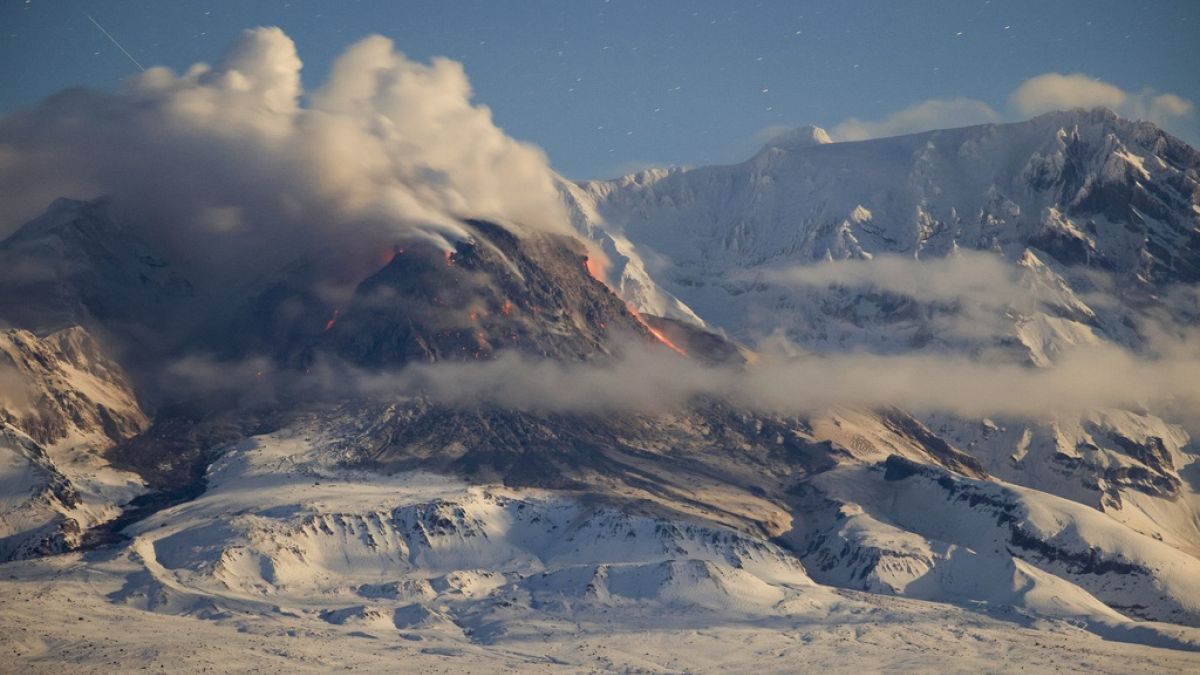The eruption of the Shiveluch volcano in Russia’s far east has caused visible ash clouds spanning over 250 kilometers. The volcano, located on the Kamchatka Peninsula, erupted on Thursday evening, sending ash clouds up to 15 kilometers into the sky. The ash cloud has covered several villages in grey volcanic dust, prompting local authorities to issue the highest alert level for aviation and advising residents to stay indoors. The eruption has also led to the temporary closure of schools in affected communities.
Shiveluch consists of two parts: the 3,283-meter Old Shiveluch and the smaller, highly active Young Shiveluch. The Kamchatka Peninsula is known for being one of the world’s most concentrated areas of geothermal activity, with around 30 active volcanoes. The eruption of Shiveluch serves as a reminder of the region’s volcanic potential and the need for vigilance among residents. The ash cloud from the eruption has reached a significant distance, highlighting the scale and impact of the volcanic activity on surrounding areas.
The eruption of Shiveluch has raised concerns about the safety and well-being of residents in nearby villages. The ash cloud has blanketed large areas with grey volcanic dust, posing potential health risks to those exposed to it. Local authorities have taken swift action by issuing alerts and advisories to protect both residents and travelers in the region. The closure of schools in affected communities reflects the seriousness of the situation and the need to prioritize safety measures.
The Institute of Volcanology and Seismology has been closely monitoring the situation and providing updates on the eruption of Shiveluch. The issuance of the highest alert level for aviation underscores the potential threat posed by the volcanic activity to air travel and nearby communities. The extensive reach of the ash cloud serves as a stark reminder of the power and unpredictability of nature, particularly in geologically active regions like the Kamchatka Peninsula. It is important for residents to heed the warnings and instructions from authorities to minimize the impact of the eruption on their health and safety.
The eruption of Shiveluch serves as a testament to the dynamic and volatile nature of volcanic activity in the region. The Kamchatka Peninsula’s status as one of the world’s most concentrated areas of geothermal activity makes it prone to frequent volcanic eruptions. Residents and authorities must remain vigilant and prepared for such events, given the potential risks they pose to human life and infrastructure. The recent eruption of Shiveluch is a stark reminder of the importance of disaster preparedness and timely response in mitigating the impact of natural disasters on communities.
In conclusion, the eruption of the Shiveluch volcano in Russia’s far east has sent ash clouds spreading over 250 kilometers, affecting nearby villages and prompting authorities to issue alerts and advisories. The volcano’s activity highlights the region’s geothermal activity and the potential risks posed by volcanic eruptions. The safety and well-being of residents are paramount, necessitating swift action and coordinated efforts to mitigate the impact of the eruption. Continued monitoring and preparedness are essential in the face of ongoing volcanic activity in the Kamchatka Peninsula. Residents and travelers alike must heed warnings and instructions from authorities to ensure their safety in the event of natural disasters like volcanic eruptions.











